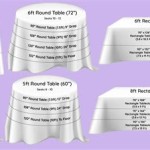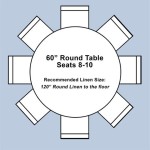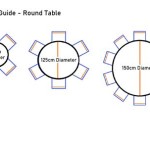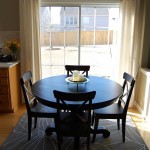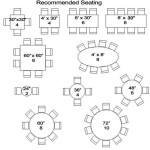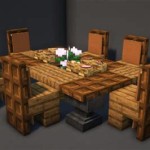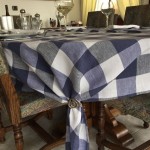How To Make A Photo Backdrop With Plastic Tablecloths And Napkins
Creating a visually appealing backdrop for photography doesn't necessitate expensive studio equipment. Resourceful photographers can achieve professional-looking results using readily available and affordable materials like plastic tablecloths and napkins. This article provides a comprehensive guide on crafting diverse backdrops using these simple supplies.
Gathering Materials
The first step involves gathering the necessary materials. This project requires minimal investment and utilizes common household items.
- Plastic Tablecloths: Choose various colors and patterns to suit different photography needs.
- Plastic Napkins: Select coordinating or contrasting colors to add texture and depth.
- Tape: Strong adhesive tape, such as duct tape or gaffer tape, is essential for securing the materials.
- Scissors:
- Wall or Flat Surface: This will serve as the base for the backdrop.
- Optional: Additional decorative elements like ribbons, streamers, or artificial flowers.
Preparing the Base Surface
A smooth, flat surface is crucial for a wrinkle-free backdrop. Proper preparation ensures a professional appearance in the final photographs.
- Select a wall, door, or large piece of cardboard as the backdrop base.
- Clean the surface to remove any dust, dirt, or debris that might affect adhesion.
- If using cardboard, ensure it is sturdy enough to support the weight of the tablecloths and decorations.
Creating a Simple Single-Color Backdrop
A single-color backdrop provides a clean and uncluttered background, ideal for product photography or portraits.
- Unfold the chosen plastic tablecloth and ensure it is wrinkle-free.
- Position the tablecloth against the base surface, ensuring complete coverage.
- Secure the top edge of the tablecloth to the wall or board using tape. Ensure the tablecloth hangs taut.
- Secure the sides and bottom edges of the tablecloth, eliminating any wrinkles or creases.
Designing a Textured Backdrop with Napkins
Adding napkins creates texture and visual interest, enhancing the backdrop's aesthetic appeal.
- Begin with a single-color tablecloth base as described above.
- Fold or crumple the plastic napkins to create desired textures.
- Attach the napkins to the tablecloth using tape, creating patterns or random arrangements.
- Experiment with different napkin colors and folding techniques for varied effects.
- Consider overlapping napkins to create depth and shadows.
Creating an Ombre Effect
An ombre backdrop transitions smoothly between two or more colors, creating a stylish and contemporary look.
- Select two or more tablecloths in graduating shades of the same color.
- Overlap the tablecloths slightly, starting with the darkest shade at the top.
- Secure the overlapping sections with tape, ensuring a smooth transition between colors.
- Adjust the overlap to control the gradient's intensity.
Adding Decorative Elements
Incorporating decorative elements further personalizes the backdrop and adds a unique touch.
- Use ribbons, streamers, or artificial flowers to create borders or patterns.
- Attach the decorations using tape or glue, ensuring they are securely fastened.
- Choose decorations that complement the subject of the photograph and the overall aesthetic.
Lighting Considerations
Proper lighting is essential for maximizing the backdrop's impact in photographs.
- Avoid direct, harsh lighting that can create glare on the plastic surface.
- Diffuse the light using softboxes or umbrellas for a more even illumination.
- Experiment with different lighting angles and colors to achieve desired effects.
Maintaining and Storing the Backdrop
Proper storage ensures the backdrop's longevity and usability for future projects.
- Carefully remove the backdrop from the base surface, avoiding tearing or damage.
- Fold or roll the tablecloth and napkins neatly to prevent wrinkles.
- Store the backdrop in a cool, dry place away from direct sunlight.
Exploring Creative Variations
The versatility of plastic tablecloths and napkins allows for endless creative possibilities.
- Experiment with cutting the tablecloths into shapes or fringes.
- Create a layered backdrop by combining multiple colors and textures.
- Utilize different taping techniques to create patterns or designs.
By following these guidelines, photographers can craft a variety of visually engaging backdrops using readily available and affordable materials, enhancing their photography without significant financial investment.

Back Drop Using Curtain Rods And Plastic Table Cloths I Taped The To Make A Slo Tablecloth Backdrop Easy Backdrops

Easy Diy Party Backdrop Backdrops For Parties Birthday

Create A Stunning Spring Backdrop With Tablecloths

Jessica Grant On Instagram Diy Fringe Backdrop Using 1 Tablecloths Save This Idea For Your Next Celebration Here S How You Ll Need Rectangle Tableclot Plastic Tablecloth Backdrops

Diy Guide Create Unique Fringe Photo Booth Backdrops Using Plastic Covers Jam Paper

Diy Guide Create Unique Fringe Photo Booth Backdrops Using Plastic Covers Jam Paper

Dollar Plastic Tablecloths Make For A Great Photo Booth Backdrop Graduation Party Baby Shower

Rainbow Backdrop Using Plastic Table Cloths From Dollar Tree Fruit Birthday Party My Little Pony

D I Y Photo Booth Backdrop For 10 Diy Tablecloth Wedding

Photo Booth Backdrop Using Plastic Tablecloths For A Birthday Party So Easy Rainbow Trolls Pony
Related Posts

